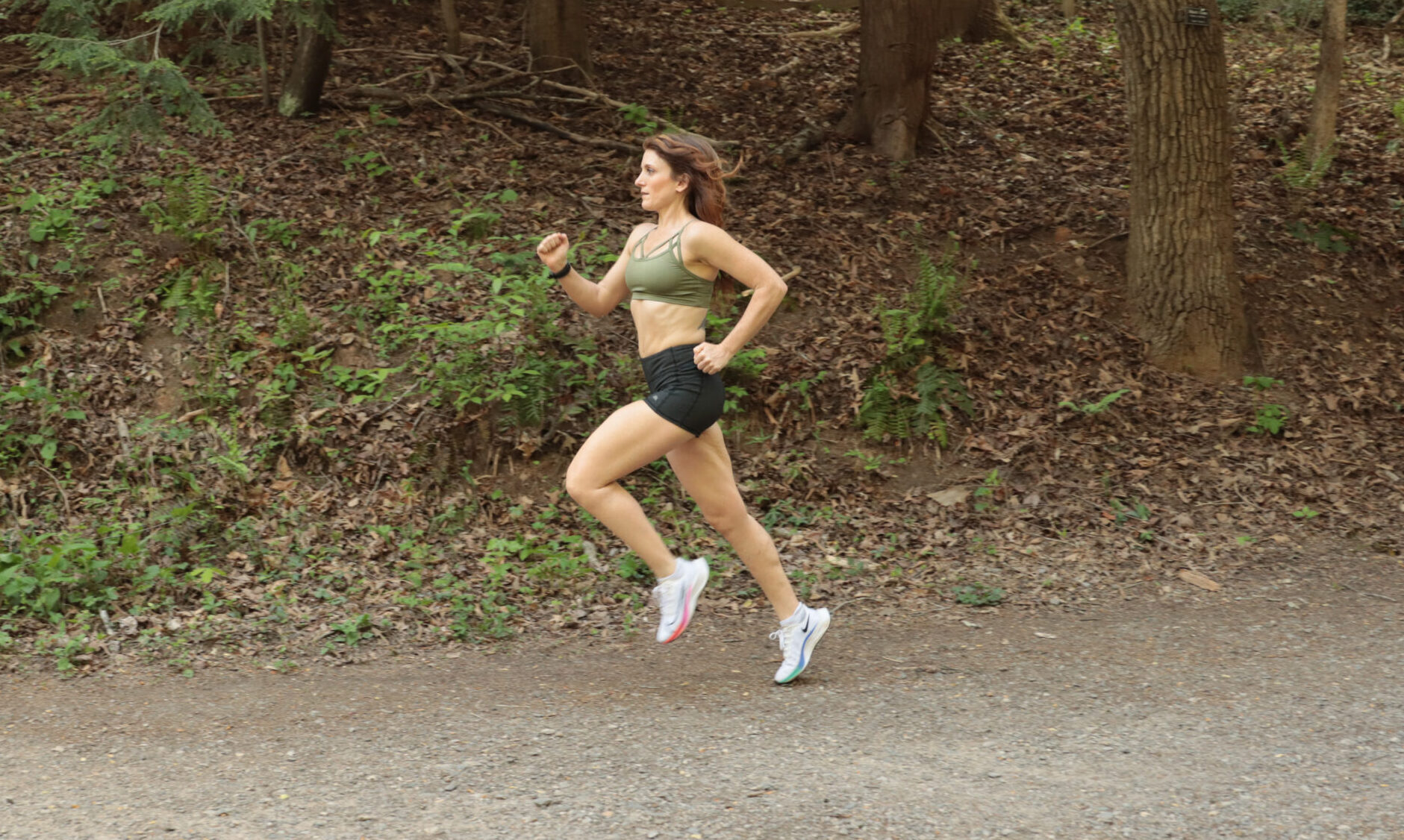Can you tell what pace you are running by feel alone? Most runners have a hard time doing this, but I’ll give you a few tips so that you can learn to nail your running paces by feel.
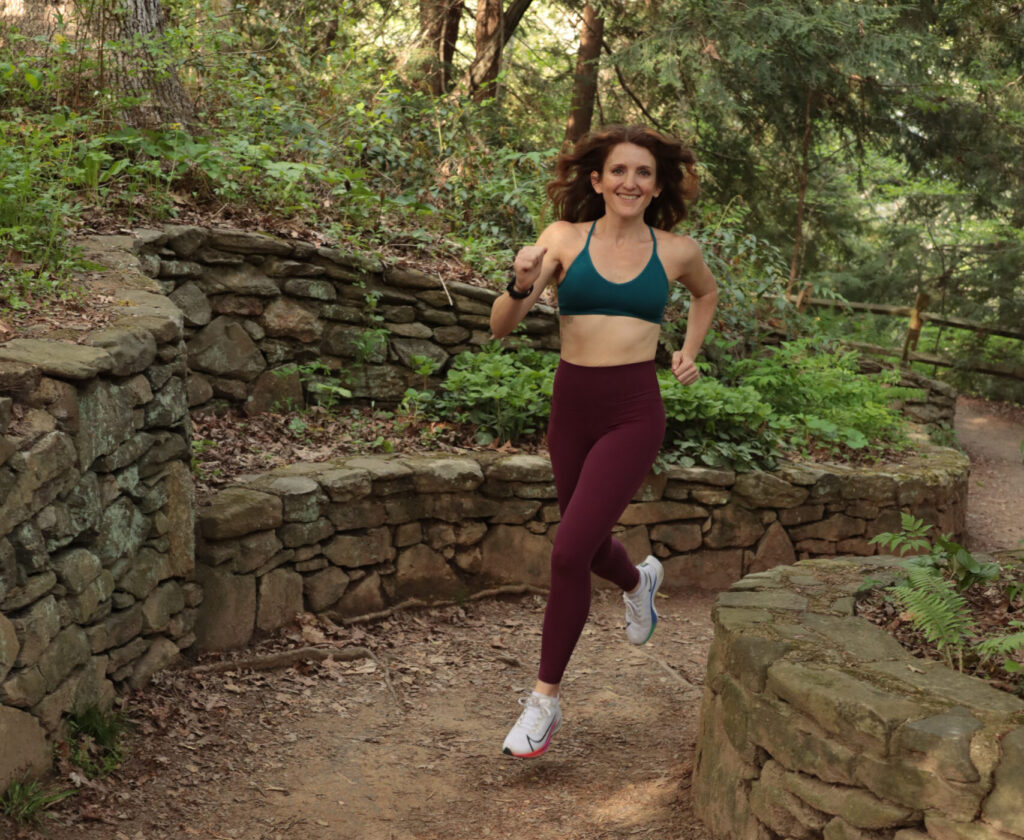
The “Feel” Comes from the Purpose
If you are just starting your running journey, you are probably at the point where you are diving deep into everything running. I know because I’ve been there!
You might be learning all about tempo runs, steady runs, threshold runs, VO2 max workouts and more. Maybe you’ve even joined a group that runs workouts at the local track. Good for you and welcome to the running community! It’s awesome here.
Or maybe you have been running for a while and you are starting to feel like a slave to your watch. You don’t have a clear sense of what your runs should feel like, other than that you should run fast on speed days.
So let’s figure this out.
Let’s say that you find a workout that you want to try and it says: “run half marathon pace for 3 miles or half marathon effort.” That’s super helpful if you have just raced a half, but if you’ve never raced one before, what on earth does that feel like? Or what if you find a workout that simply says, “run medium effort.” Uh, that’s not very helpful at all, right?
I’m going to try to break this all down a little bit.
The first step is understanding the purpose of each run. That’s the key to determining how you should feel for each one.
Like anything, learning paces by feel will take time. But you’ll get a lot better at it faster if you can understand the “why” of your workout before you even lace up your shoes.
Let’s look at some typical runs for distance runners, their purpose, and how you should feel running them.
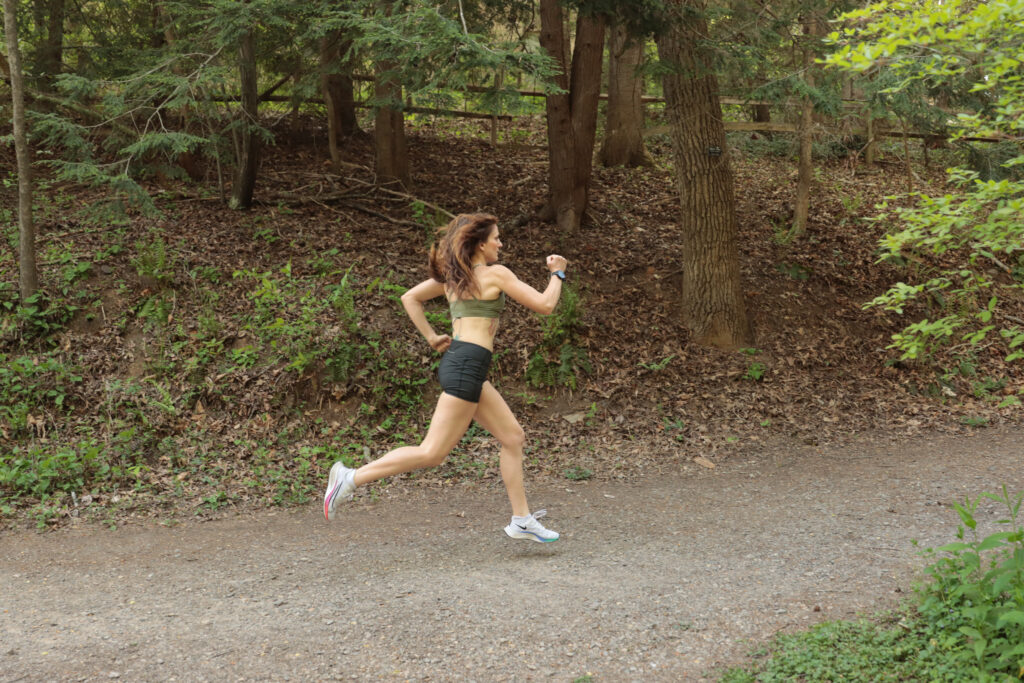
Steady State
Steady runs are used for several different purposes, but my favorite use for them is in marathon training. I use steady runs in the day before some of your long runs to “pre-fatigue” your legs a little bit to make your long run just that much harder, without having to run all the miles at once.
Typically a steady run is right around marathon pace, but again, if you’ve never raced a marathon before, that’s not helping you much!
But hang on and I’ll get to that part in a sec. We’ve got to understand the purpose of the steady before we get too attached to what pace you should run.
Running at your steady pace maximizes development of your aerobic threshold, which is defined as the fastest pace you can run while still remaining completely aerobic. That means your muscles have enough oxygen to produce all the energy they need. At the same time, you are still burning fat as your primary fuel source.
If you go faster than that, you cross the threshold and start to go anaerobic. That can be useful for other workouts, but not the steady state.
Why should you try to stay in the aerobic zone? If you want to run anything longer than a 5k, that will be your primary energy system. More than 85 percent of the energy needed for distances of 5k or longer comes from your aerobic system, so you’ll want to get good at it. The more you can develop your aerobic system over months and years of training, the faster you’ll be able to run over long distances.
What does a steady feel like?
The best way to describe it is “comfortably hard”. You should be able to run a good chunk of your workout at that pace, but it’s not exactly easy. It’s around marathon pace, so that might be a pace you could run for 3, 4, or even 5 hours. But if you are just starting out, I hope you are not out there running for 3 to 5 hours at a time just yet!
But maybe your normal run is, let’s say 30 minutes. I’ll give you 10 minutes each for the warm up and cool down, so that only leaves you 10 minutes. When you are just starting out, your steady pace might be what you can do for those 10 middle minutes. But if you already are fit or have a big aerobic engine from other sports, you might be able to run much faster than what I would call a steady pace, so watch out for that.
“Comfortably hard” is going to mean something different to every runner, so one trick is to use your breathing as a guide to how it should feel.
Steady runs should typically be performed while breathing at a 3:3 ratio (three steps – left, right, left – while breathing in; three steps – while breathing out). A 3:3 breathing rhythm enables you take about 30 breaths per minute, which is needed for running “comfortably hard”.
Another easy way to test whether you’re running somewhere in the range of steady pace is to try to talk out-loud. If you can get out maybe three to four sentences, but can’t talk the ear off your running buddy, that’s probably about right. If you can only blurt out one or two sentences before you start gasping for breath, you’re running too hard.
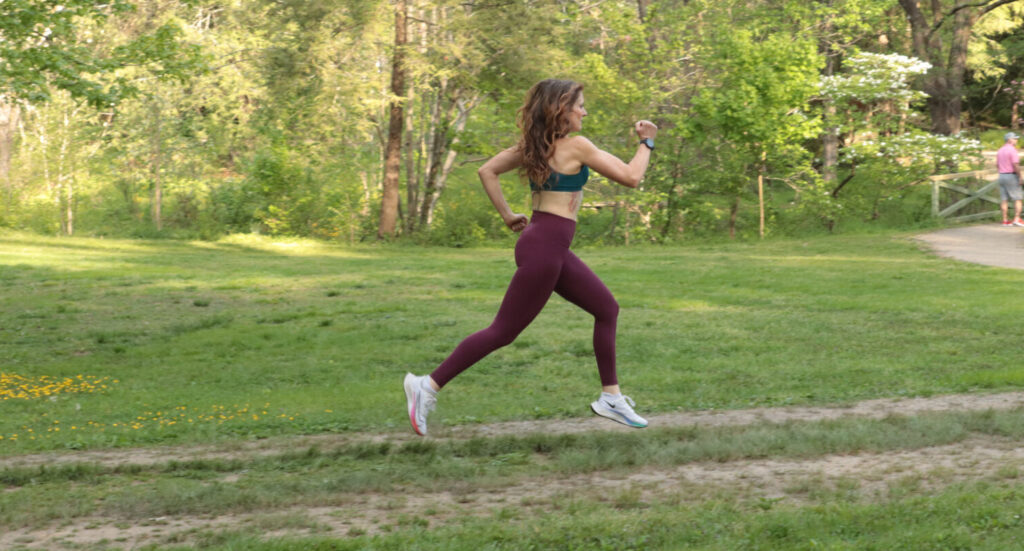
Tempo Or Lactate Threshold
The tempo run is the a classic stamina-building workout for distance runners. I define stamina as speed plus endurance. Running the wrong pace on a tempo, both too slow or too fast is not going to give you the most bang for your stamina-boosting buck.
Typically, a tempo run is going to come in somewhere around 10-mile race pace and half marathon pace. But that will depend on the distance of the workout, because the longer the run, the harder that pace will be to sustain.
What is the purpose of a tempo? It can help if we call a tempo by its other name, lactate threshold run. That’s defined as the fastest pace you can run without generating more lactic acid than your body can utilize and reconvert back into energy.
Your body can only “clear” or reconvert a certain about of lactic acid back into energy before the lactate floods our system and contributes to fatigue. That’s the burning feeling you get in your legs when you run hard.
If you want to learn to race faster, you must teach your body to clear lactate more efficiently. That’s done with this kind of run.
But if you run the wrong speed for a tempo you’ll either produce too much lactate quickly (by running too fast); or you’ll not produce enough lactate (running too slow) and not challenge your body.
That is why it’s critical that you learn how to feel what tempo pace should be and not just rely on your watch.
What does a tempo feel like?
A tempo run should feel like a “hard, but controlled effort”. You should be able to continue your tempo pace for somewhere around 30-45 minutes for most runners.
The breathing rhythm for a tempo is typically a 2:2 ratio (two steps in and two steps out). Which comes out to be around 45 breaths per minute.
If you are using the talk test, you should be able to say a sentence or two, but that’s really it. If you can recite the plot of the last movie you saw on Netflix, that’s not a tempo.
Even for experienced runners, figuring out your tempo pace is something that you will have to continue to tweak. Your pace will depend on conditions and it’s very easy to let your ego get in your way of a good run.
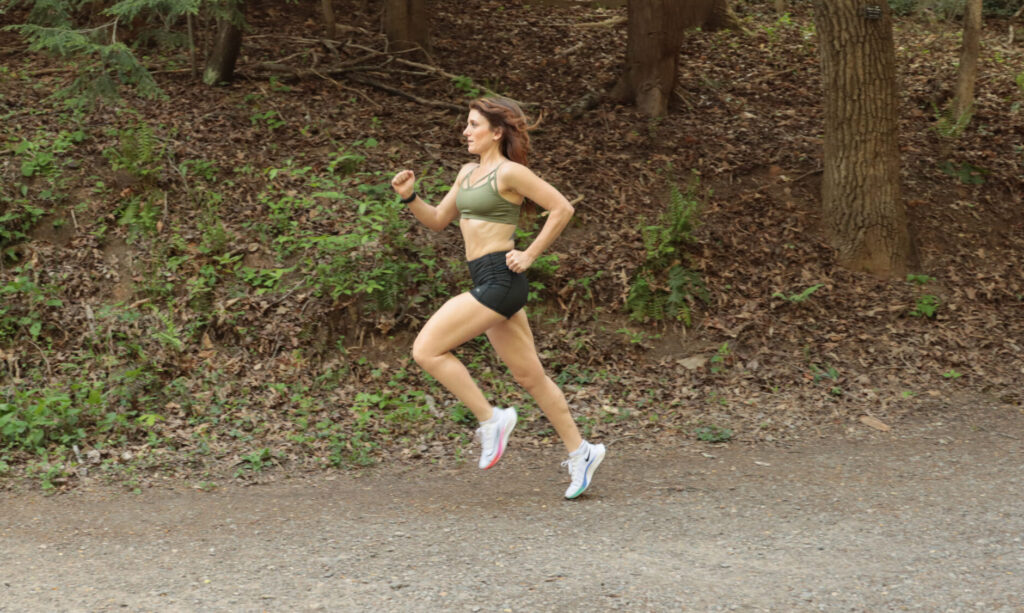
Speed Workouts or VO2 Max
These can be a lot of fun, or they can be terrifying for a new runner. The goal with a speed workout is to run hard, but to PACE yourself. You don’t want to run the first few intervals so hard that you collapse before the workout is done. Every workout will feel harder the longer it goes so in order to get even pacing from the beginning, you need to sandbag the first few, keep it controlled in the middle, and then give it just about all you’ve got at the end.
From a pacing perspective, VO2max workouts are completed at 5k pace or faster, sometimes much faster!
So what’s the reason behind these workouts, besides just to get faster?
Defined simply, VO2 max is the maximum amount of oxygen your body can utilize during exercise. It’s a combination of how much oxygen-rich blood your heart can pump and the muscles’ ability to using that oxygen.
Training at VO2max increases the amount of oxygen your body can use. The more oxygen you can use, the faster you can run. (well, for the most part, but let’s keep it simple here).
Besides boosting your ability to use oxygen, speed workouts force you to run more efficiently and with better form to hit those speedy times. That will translate to better form at all speeds.
What does a VO2max workout feel like?
It should feel very hard, but just a scootch under all out effort. You should be breathing very hard and be very thankful when you get to the end of each interval. At the end of the whole workout, you should think that you could maybe run one or two more intervals, but you wouldn’t want to.
Most runners use a 1:2 ratio or a 2:1 ratio breathing rhythm. This works out to be about 60 breaths per minute. And the talk test? Maybe you can get out a word or two, but that’s about it.
Now, you should be running hard, but not quite so hard that you are doubling over at the end of each rep with your hands on your knees. That’s when you know you should take it down a notch.
What something feels like in perfect weather is not going to feel the same in heat, cold, hills, or days where you just had a fight with your spouse. Those days are going to feel harder, so the body will get a tough workout at a slower pace.
Pace Perfection is an Illusion
Hopefully, I’ve given you some tips to make the most of your workouts. But what I don’t want to do is make you feel like every run has to be at the perfect effort level or perfect pace to be effective. It doesn’t. All running will make you a better runner and aiming to at least get in the ball park with your speed workouts is far more important than stressing out over this pace or that pace.
While it’s great to look at each individual workout, sometimes it is also helpful to zoom out to the big picture, especially if you are training for a big goal race. Running and training is a journey. It’s not always going to be perfect, but you are still getting fitter and every run contributes to that in it’s own way.
We always want our hard work to have great results on that big goal day. While we can’t guarantee we will get those results every time, making smart choices with your training and learning to feel your training paces will set you up for a much better chance of that happening.

